Canning and preserving food
Have you ever wondered what will happen if there is a disaster one day, and how will you provide food for survival? While there are many ways to preserve food for doomsday, here we’ll tell you how to preserve your food in jars. When you stockpile food for emergencies or as preparation for a grid-down scenario, it’s essential that this food lasts a long time because you don’t know how long the lights will be out.
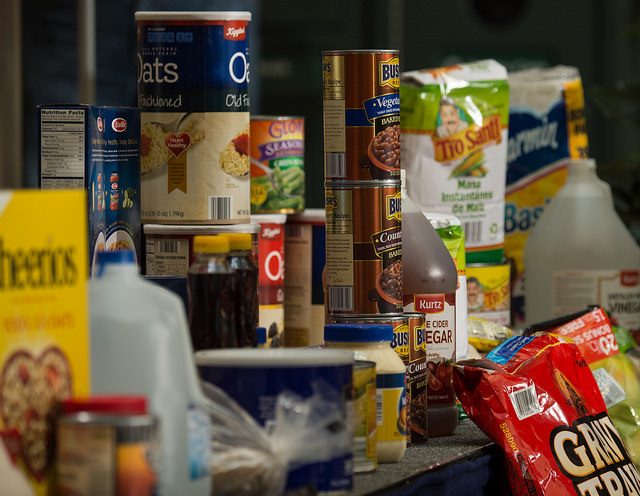
It’s not only important that you just can and preserve food; it’s important that you do it the right way. You can store away and can as much food as you want, but if you don’t do it properly, you run a significant risk of bacteria getting into the food that poses a major health hazard. It’s ultimately riskier to eat food that hosts bacteria rather than not eat at all, which is why knowing proper food canning and preservation techniques are important.
The best ways to can food are either with a pressure canner or with hot water canning.
Can food using a pressure canner
The first thing you will want to do is clean each of your jars. Take the lids and soak them in hot water to confirm that they are sanitary.
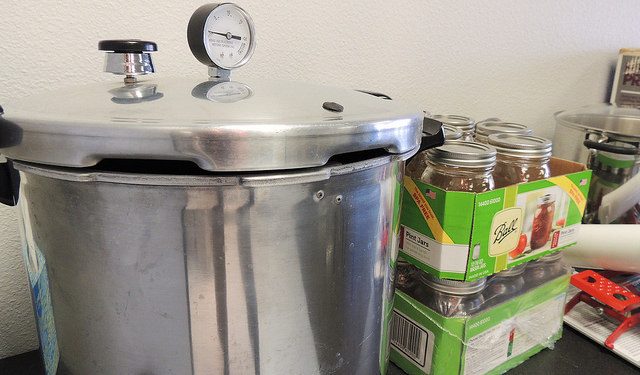
Next, you will want to fill up each of your jars with the food that you want to preserve. The food can either be raw or cooked already, but it should be chopped or cut up so that you can get as much of it as possible into the jars. If desired, you can add salt to the food for some extra flavoring, but it is not required.
Next, after you have placed the food into the jar, you will want to add an inch of water and then screw on the lids. The lids need to be screwed on firmly or secured extra with a band before they can be heated up. Each canner should come with a list of directions on what to do next and in regard to the heat levels in the pressure canner. You may have to be continuously present so that you can adjust the heat according to the direction. After the time on the directions has passed, you remove the jars from the canner and allow them to cool down. Then unseal the lid of the jars.
Allow the jars to cool down on the counter. You should hear a snapping noise, which indicates that the lid is being pulled inside against the jar’s rim by the vacuum that is forming.
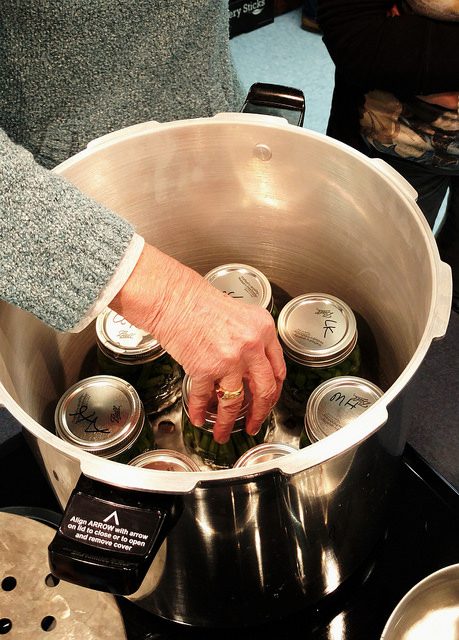
Next, choose a place where you will store each of your jars. The cans should ideally be kept in cool and dark locations. Under no circumstances can they be stored out in the sun or in hot temperatures, because bacteria will form. The best place in a typical home to store pressure cans is in the basement because the cans do not run the risk of being exposed to hot temperatures or freezing temperatures.
Hot water canning
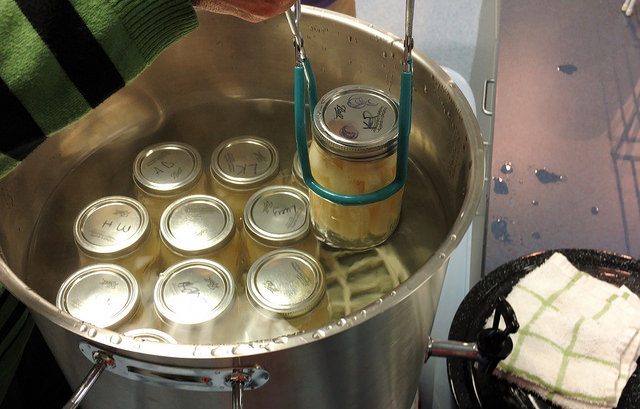
Pressure canning should be your first option for canning food simply because it is the safest method. However, a more traditional method that you can use as a backup option is hot water canning. The only limitation for this method is it has to be done with foods that are high in acids and that are in combination with fruits, such as having lemon juice added to them. Pickles and tomatoes are two examples of food that you can store with the hot water canning method, though again, you should only go with this method if you do not want to purchase a pressure canning pot.
To use the hot water canning method, all that you will need is a typical large pot. The jars that you use have to be smaller than this pot so that they fill the fit inside of them and be covered by the water. Fill up the jars with the food and water as with the last method and then attach their rings and lids.
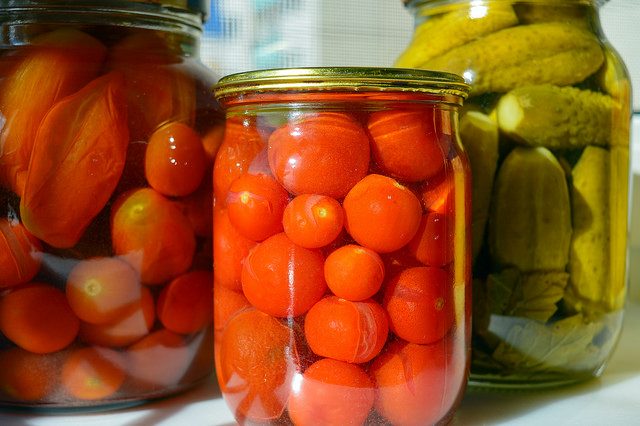
While this is going on, heat up the water in the pot so that it is ready to go once you are finished filling up the jars. Set the jars into the pot and then pour in water until it is an inch higher than the jars. The water should be boiling throughout this process. Fruits in the hot canning process should take around fifteen minutes while tomatoes and similar products should take around thirty minutes.
After the timing is completed, remove the jars from the pot and store them away.
Best times for canning food
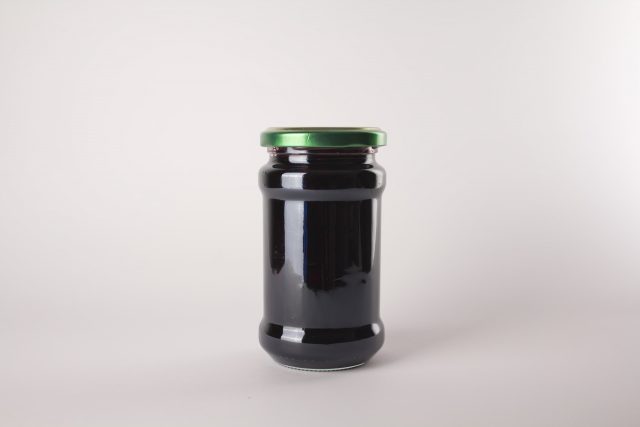
While the directions for your pressure canner may indicate otherwise, as a general rule of thumb, these are the basic pressure cooking times for a variety of different foods. We’ve purposefully excluded all kinds of meat from this list because it is highly recommended that pressure canning meat is left to someone who has much more canning experience.
- Apple: 8 Minutes
- Raspberries: 8 Minutes
- Cherry: 10 Minutes
- Pears: 10 Minutes
- Peaches: 10 Minutes
- Tomatoes: 15 Minutes
- Beans (Green): 25 Minutes
- Beets: 35 Minutes
- Potatoes: 40 Minutes
- Peas: 45 Minutes
- Corn: 90 Minutes
- Pumpkins: 90 Minutes
- Sweet Peppers: 90 Minutes
Conclusion
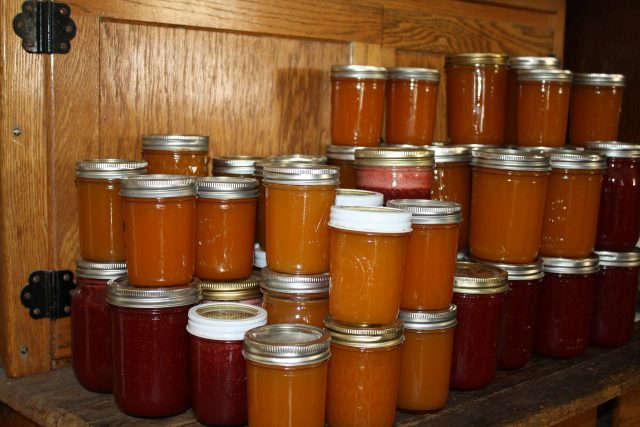
Canning and food preparation is an important part of being a survivalist because it enables you to create a healthy stockpile of foods beyond the basic survival foods of MREs. But like we mentioned earlier, it only works if you do it right. Follow the directions from the manufacturer of your pressure cooker and stick as close as possible to the cooking times that we have listed; if you don’t, there’s too high of a chance that bacteria could infect the food and you will need to start over.
The good news is that once you get the hang of it and fill up your basement with jars of canned food, you’ll be able to feed your family in the event of a power grid-down situation.
If you have any comments, please drop us a message on our Outdoor Revival Facebook page.
If you have a good story to tell or blog, let us know about it on our FB page. We’re also happy for article or review submissions, we’d love to hear from you.
We live in a beautiful world, get out there and enjoy it. Outdoor Revival – Reconnecting us all with the outdoors.





